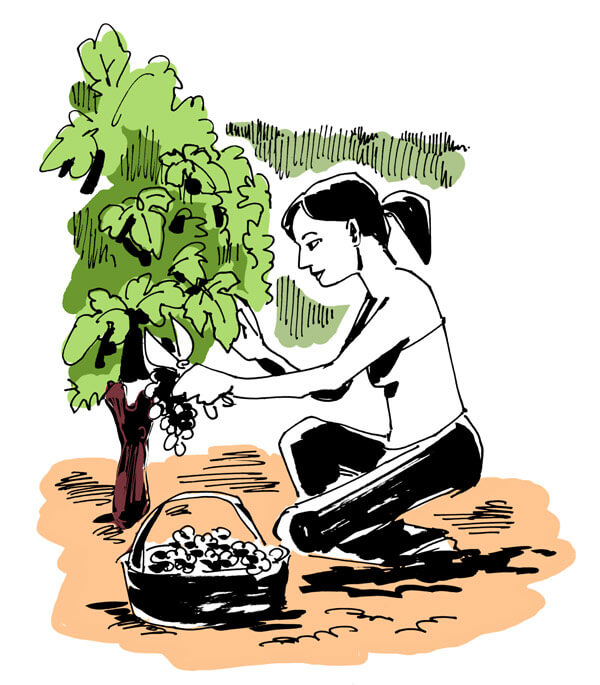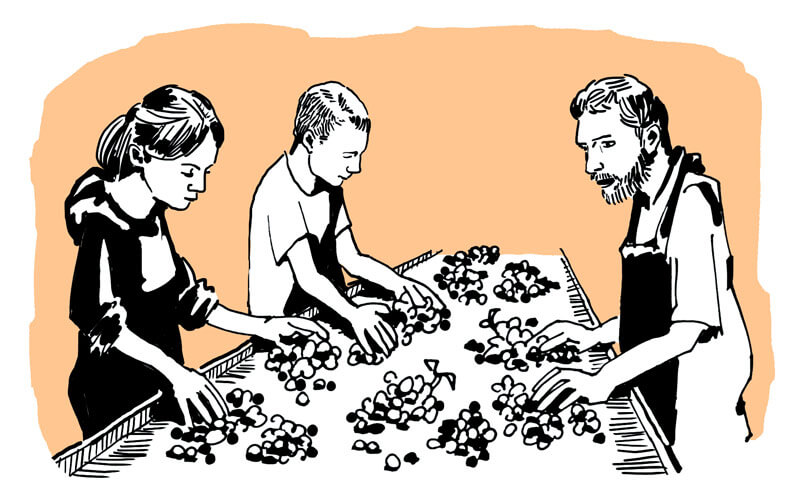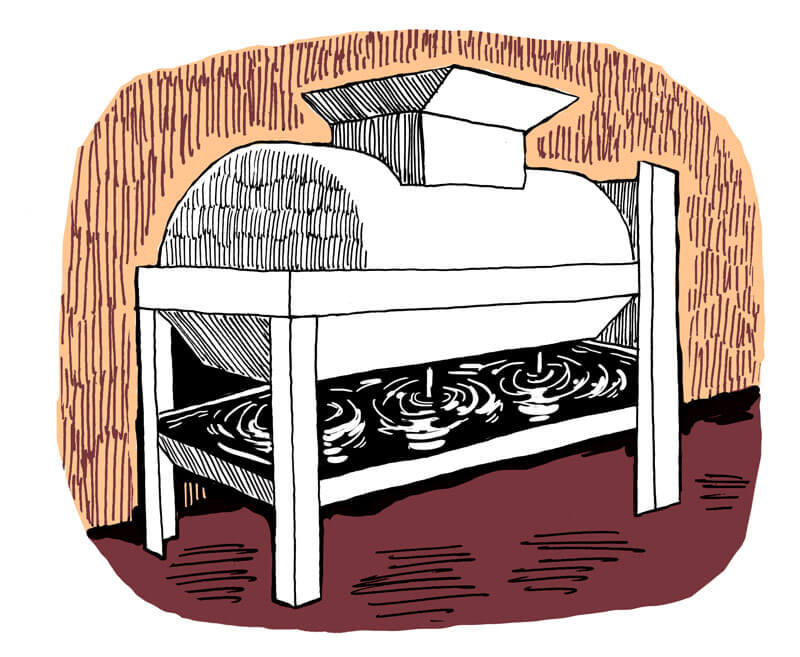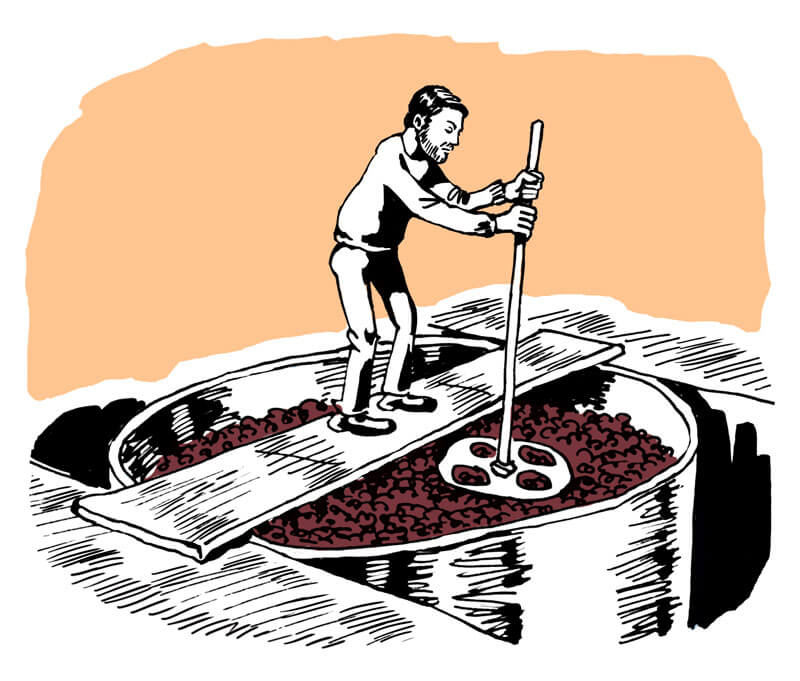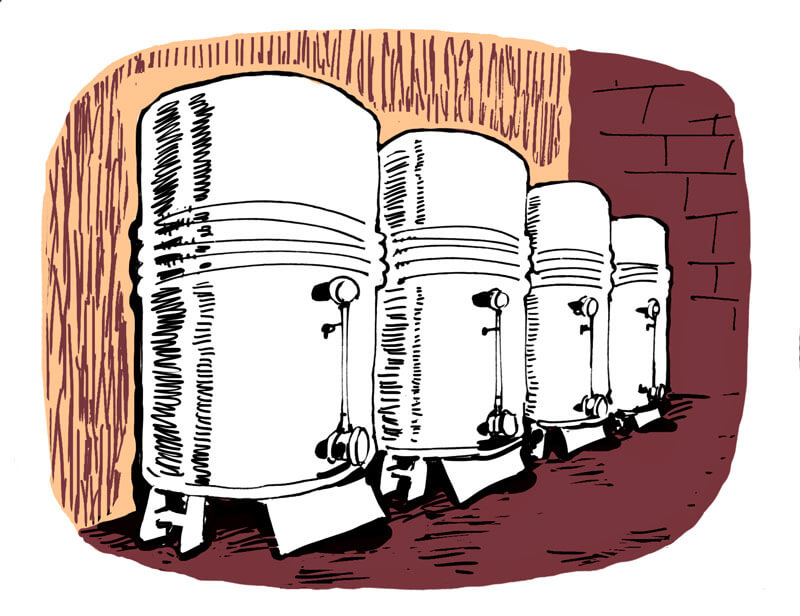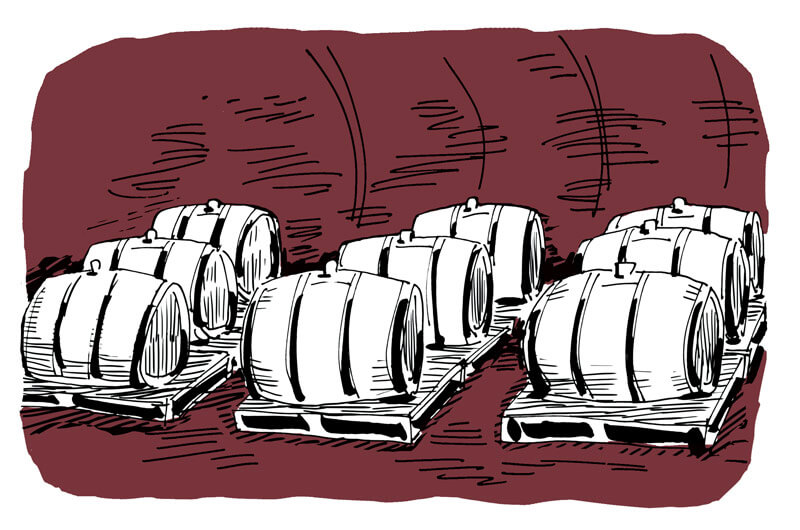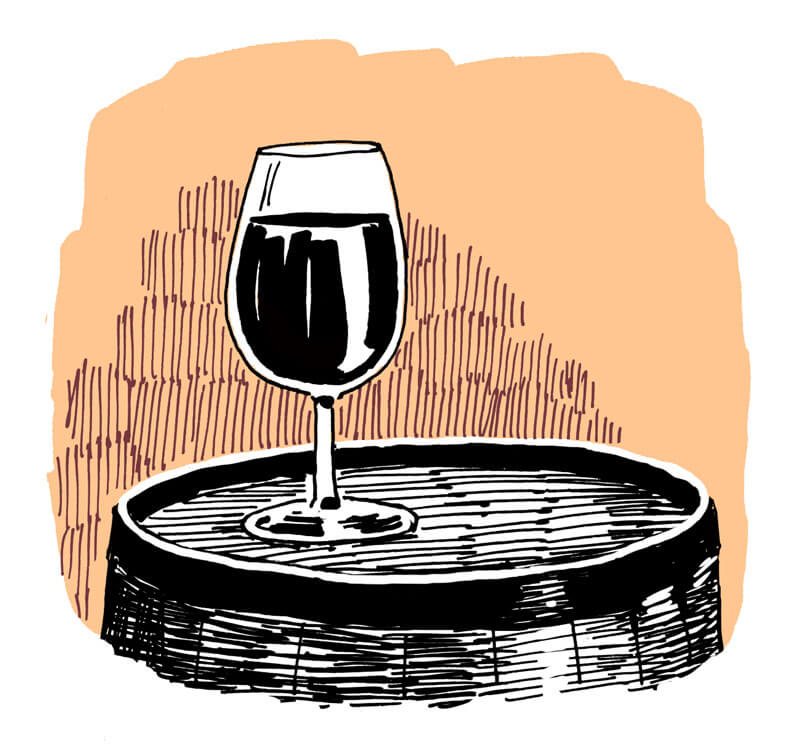Step 1:
Grapes Picking
Timing is key for harvest jobs! Grapes are collected in bins or lugs and then transported to the crushing pad.
Step 2:
Sort (remove any other materials than just fruit) and squeeze the grapes
Some grapes are fermented with their stems to add tannin, some other thicker-skinned grapes are destemmed (using a destemmer) to reduce bitter phenolics. Many white wines go directly into a wine press which squeezes the grapes consistently.
The difference between white and red wine is that red grapes, along with their skins, go straight into a vat to start fermentation on their skins. The Pomace – or fruit solid leftovers – is removed for many uses outside the winery.
Step 3:
Juice and grape is then transferred to fermentation vessels – in wood, stainless steel or concrete.
Our winemakers let nature take its course and allow wild yeasts ferment the wine naturally. Yeast will impact the wine’s level of alcohol and sugar. Red wines ferment a bit hotter than whites at the end of the process, usually between 80º – 90º F (27º – 32º C). We try to avoid oxygen contact as much as possible during fermentation. White and Rosé wines, on the other hand, need to preserve the delicate floral and fruit aromas, so they’re often fermented a lot cooler, around 50º F (10º C) and up.
Step 4:
When the fermentation is done, it’s time to rack the wine out of the fermentation vessel and to move it into what we call “élevage” in France – barrels, bottles, or storage tanks – where some wines will wait for five years before being released; and others, just a few weeks.
This process of “élevage” gives wines time to gain more body and elegance. When the winemaker feels a wine has reached its full expression in aging, then it’s time to bottle the wine for consumption… Cheers!
The best wine experience for your Natural lifestyle
Health
- Natural, sustainable wines
- Wild Native Yeast
- Low sulfites
- No additives for color, flavor or texture
- Purity and minerality full expression
Environment
- Family-farm handcrafted
- Benefits to local communities
- Preserve wildlife habitat
- Dry-Farmed
- Minimal environmental impact

